A natural garden is one where Mother Nature can take its course. However, you still have something to say about your garden when it is being constructed. Do you want a natural and indigenous garden? Should this rich bloom? Do you want to be able to pick fruit from your own garden to make jam? Or do you want a real butterfly and bee garden? This can all come together in a natural garden. Even though the garden is managed by Mother Nature, you as owner still have a lot to say about what can be found! That is why we discuss how you can enjoy nature together.
Separation
Even in a natural garden, nature must be separated from each other. Unless your neighbors want to participate in your private nature reserve of course! We can imagine that most neighbors still opt for their own garden. Therefore, be aware that you must properly separate your garden in the natural style to preserve the native atmosphere. Use natural materials for the boundary such as a rough stone wall or a wooden fence, which is completely covered with your favorite climbing plants.
Natural pavement
Walking through your private piece of nature with a cup of coffee? Sounds like a fantastic start into a relaxed weekend. In a natural garden it is important to make nice paths through your garden so that you can enjoy the garden without being afraid of crushing the plants. Choose paving with natural shapes. No symmetrical shapes or large tiles, but a winding path of gravel or wood chips fit perfectly into your natural garden. If you do not want to use gravel or wood chips, we recommend placing stepping stones. These stones do not only fit into the natural shape of the garden, but are also fun for children to hop on.
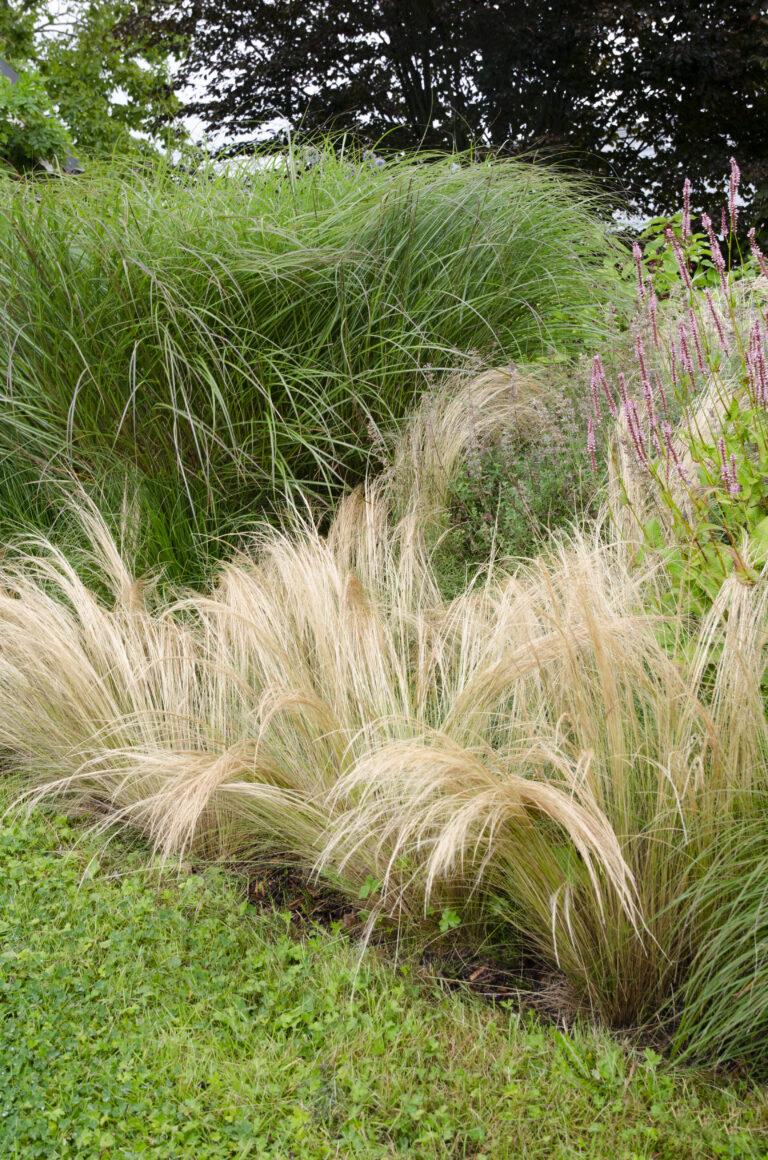
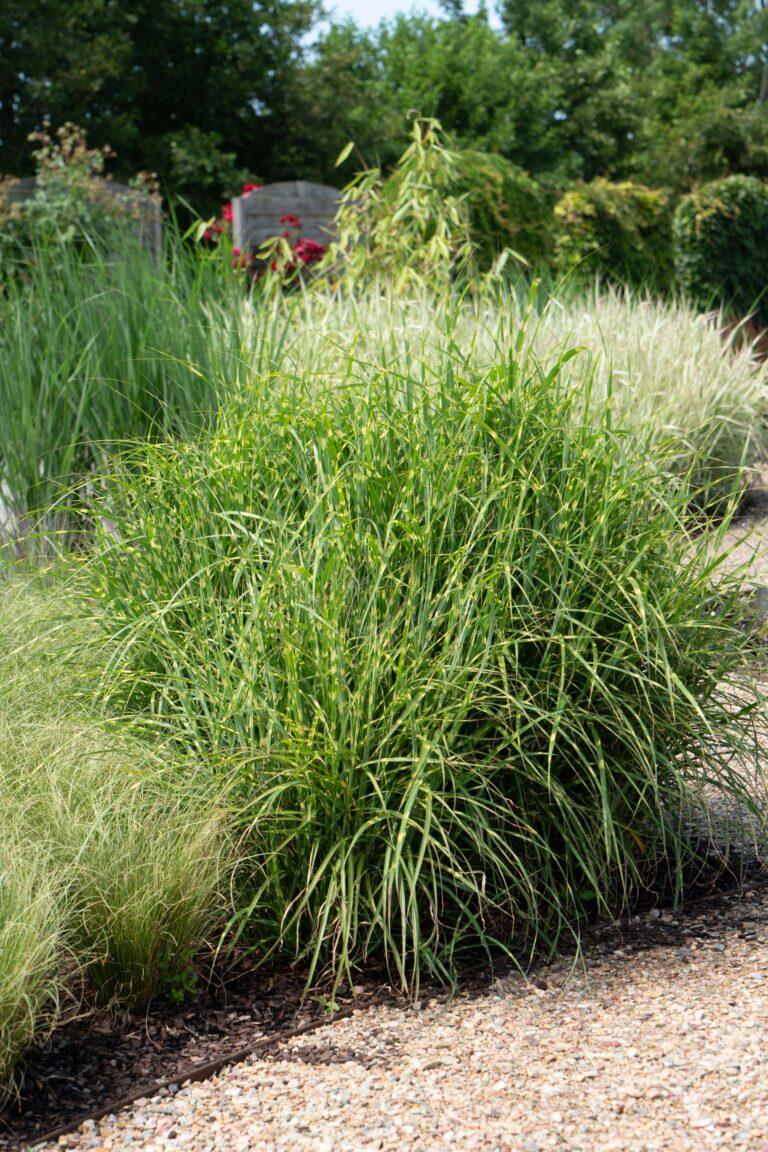
Flowers and bees
Animals cannot be missed in a natural garden. In nature, the animals are attracted to different types of plants. Depending on which insects or animals you would like to see in your garden area, you can choose the plants. Every kind of animal has its favorite plants. Bushes with berries are attractive to many birds. By placing birdhouses, birds will see your garden as their natural home more quickly. Don’t clean up your garden too often, birds will do this for you. The birds build their free-range and hiding places from this!
Bees find nectar and pollen very tasty, they get energy and nutrients from this. Each bee likes a different kind of pollen. So to make bees happy, you need different types of flowers. In addition, you attract the bees the most by placing long-blooming plants in the garden. In addition to making the food as accessible as possible for the bees, you can also attract them through nesting opportunities. There are bees that dig holes in the ground and bees that like to crawl into dead twigs. By letting nature do its work and not cleaning up too much, you ensure that the bees really become part of your garden. You can always stimulate this more by setting up a bee hotel.
Just like humans, butterflies have a different taste. By placing different types of flowering plants in the garden, nature will reward you with a garden full of butterflies. The same rules as to bees apply to butterflies. Yet butterflies prefer purple, blue and yellow flowers. These colors should be present in a real butterfly garden. By varying the plants in height with each other, butterflies can orientate themselves well within the environment. The best butterfly gardens also offer food for caterpillars. Caterpillars are very picky and prefer to eat only a few types of plants. Do not immediately remove the nettles from your garden, this is one of the favorite plants that let caterpillars grow super fast!
Water
Your natural garden cannot exist without animals, but animals cannot exist without water. Make sure there is easy access to water. In addition, you can support the natural appearance with water in the garden. Integrating water in the garden is not just for large gardens. A small natural garden can also be supplied with water.
Natural pond
For larger gardens, we recommend working with a natural pond. A natural pond provides even more life in your garden. Water in your garden will not only give you fish, the amphibians will also thank you immensely. Large insect species need water to reproduce. Do you want dragonflies in your garden? Then a natural pond is a good idea. The difference between natural ponds and other pond types is especially the difference in size. During the construction of this pond, you must take into account a minimum depth of 90 cm in connection with the fluctuating groundwater level. In natural ponds, the groundwater is very decisive for the construction. Therefore, always check the quality and the groundwater level. Groundwater is different in every garden, sometimes you have to dig meters before the groundwater comes up. In addition, there is also a lot of rust in groundwater. You can neutralize this by using oxygenating plants. When the small aquatic animals discover your natural pond, they will nest in it. These little animals help keep your water clean from rust. As a result, several animals will live in your piece of private nature.
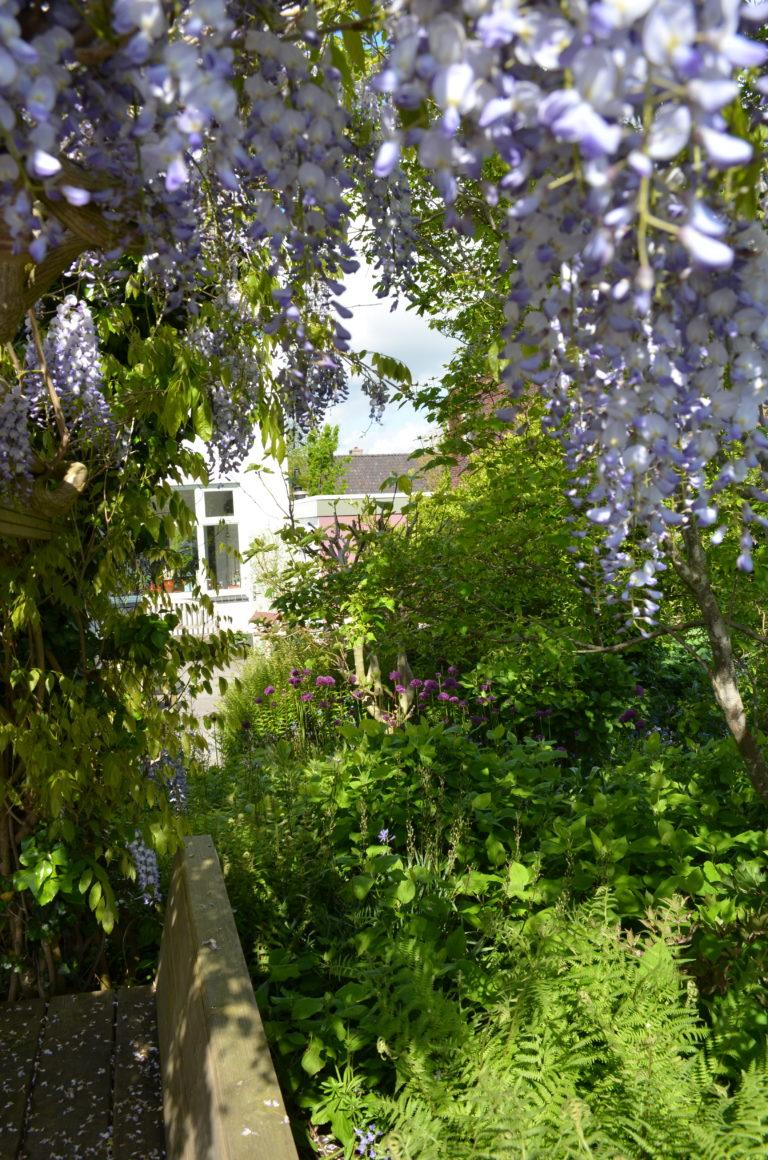
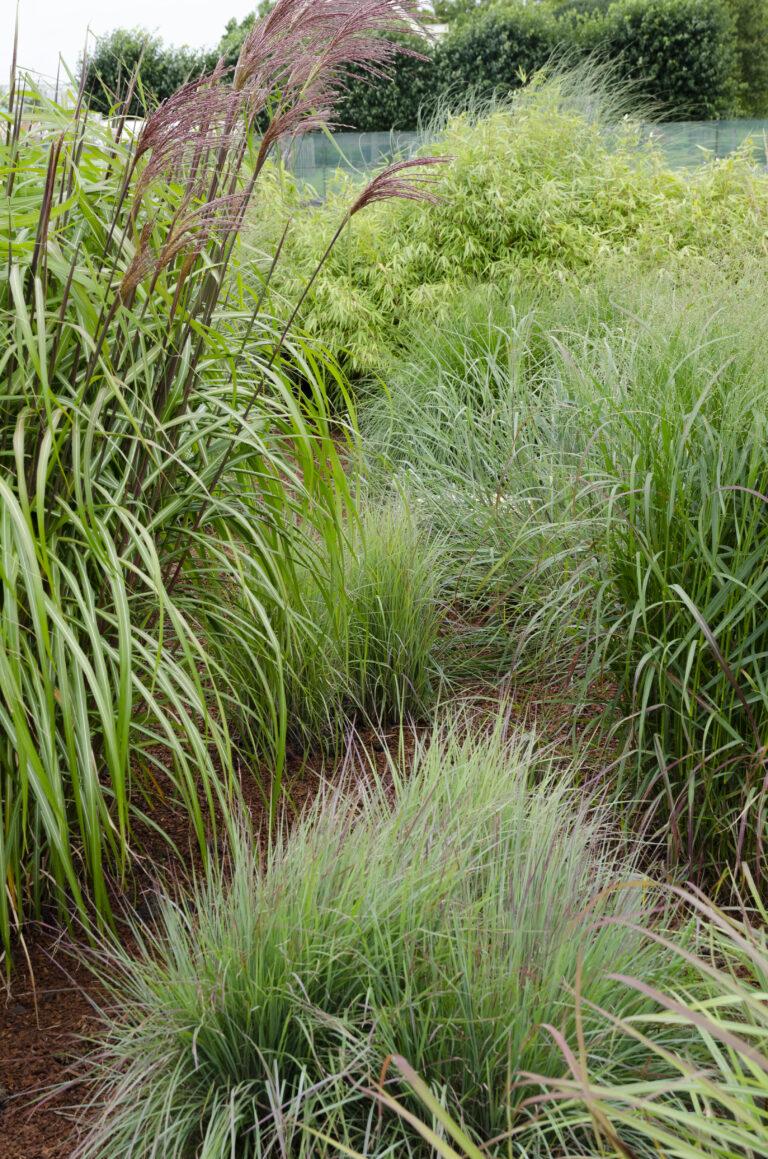
Small water elements
Not every garden is big enough for a natural pond. Yet you can process many different water elements in your natural garden. Use small water bowls made of natural stones for birds or make a small and shallow pond. You can make this extra decorative by using an old vase. Place this on the spot with water supply to your pond. By using the old vase for a waterfall you get a rustic effect in your garden. You can stay creative here! Do you find an older vase not suitable for the garden? Then stack some natural stones over the water supply. In this style, always use natural products when decorating your water places. Small ponds and water features attract amphibians less than a real natural pond. Yet you can certainly expect the visit of dragonflies, frogs and other animals.
Rain barrel
In recent years, the rain barrel has become more and more popular. We at Perfect Garden are fans too! The water in our pipes is very clean, which is great for us. This way you can drink the water directly from the tap. Your garden does not need the clean water. The plants in the garden benefit even more from rainwater than from tap water. Tap water contains chalk, which for many plants does not taste like a tasty lemonade. Watering without chalk also ensures a better absorption of fertilizers.
A rain barrel is not only good for your wallet. This also ensures less stress during the extreme weather conditions that have become increasingly common in recent years. During a longer period of drought you can water your garden in an environmentally friendly way. Unfortunately, we experience more often flooding due to extreme rainfall. A rain barrel in your garden builds up a buffer. This allows the water to be absorbed into the ground while the excess rainwater is collected in the rain barrel. This way you can use the water at a later time and you prevent water damage to your garden. Weather can sometimes be unpredictable and give more rainwater than you can collect with a rain barrel. Buy a fully automatic rain barrel which automatically shuts off the water supply when the rain barrel is full. Do you already have a rain barrel? Then use an overflow piece. This is a hose that you can connect to the top of your rain barrel. When the barrel becomes too full, the water flows through the hose to the place designated by you.
Super green
The natural garden is a place where nature can go its way. Your garden is not just green, but super green! You can create your own piece of free nature in any garden regardless of its size. You can completely indulge yourself when choosing plants in your natural garden. Everything is allowed and everything is possible. Is there already a lawn or were you planning to create a lawn? Then turn this into a flower meadow. Use a mixture of flower seeds to grow a cheerfully blooming surprise here. In addition, a flower meadow is easier to maintain than a lawn.
Any kind of greenery is welcome in a natural garden. Most people choose the most native species because they remain the strongest in the environment. Yet nowadays you can buy a lot of non-native plants that have been strongly cultivated. This means that the growers have worked for years on the plant to make it as suitable as possible for our climate.
Provide as much variety as possible and arrange this according to your own preference. Always make sure that what you are planting is actually in the best place to grow. Make sure you know what the sunny spots are in your garden. Then plant the plants that need the sun the most there. By basing the layout on the most positive effect of the climate, you need little or no care for the plants. This way you get the most out of your garden without making this maintenance intensive. Nature will unfold in the most plausible place and you can enjoy it!
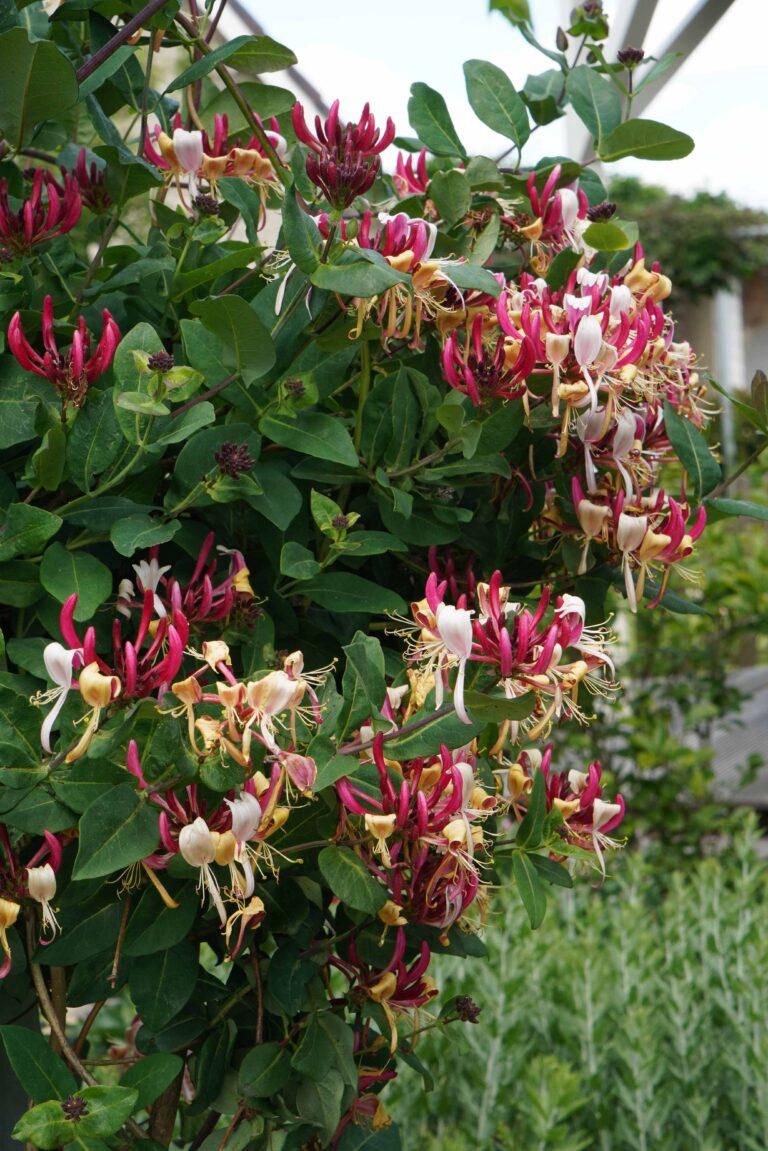
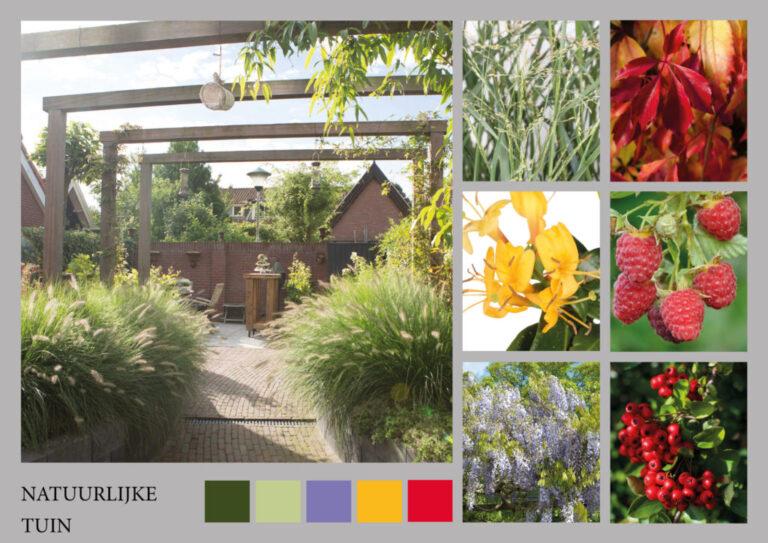
To make the choice easier, we have already listed a number of products from the Perfect Garden range. With these plants you can be sure that you will let the rural atmosphere return to your garden. These plants also attract the attention of bees, butterflies and bees, which ensures extra biodiversity around you.
- Lonicera henryi ‘Copper Beauty’ is a deciduous honeysuckle and, in mild winters, also evergreen honeysuckle. The yellow-white flowers are real bee attractants, this is not only due to the beautiful color of the flowers. The Copper Beauty is known for the sweet scent that the plant spreads. The scent is strongest in the evening, another reason to end your day in your garden!
- Parthenocissus Henryana is also called Virginia creeper. It is a colorful climber with big, green leaves. The silver-colored vein in the leaf turns red in the autumn! This climber grows up to 4 meters high and attaches itself to smooth surfaces, which is perfect as a decoration for your facade.
- Pyracantha coccinea ‘Red Star’ is a firethorn which develops fewer thorns than other Pyracantha species. Red Star blooms in June with white flowers and green berries appear in August. The green berries turn red during September. In addition, the plant is evergreen and the berries attract all kinds of birds to your garden!
- Pennisetum alopecuroides ‘Hameln’ is a popular grass with a compact growth. The leaves are narrow, linear and green to dark green. This ornamental grass is also hardy, drought tolerant, tolerates sea wind and air pollution. You can use the plumes as cut flowers and put them in a vase in your house.
- Rubus idaeus ‘Naschmich’® is a thornless autumn raspberry. The raspberry fruits are ripe in July and August and you and your family can enjoy the large fruits from your garden. The raspberries are bigger than you are used to and are dark red with a sweet and sour taste. This autumn raspberry is self-pollinating, attracts bees and bumblebees and is grown by us in an organic way. This means that only plant and animal materials have been used when cultivating the Rubus.
- Wisteria sinensis ‘Prolific’ is better known as Chinese wisteria. This climbing plant produces long blue-purple flower clusters that appear en masse in May and June. Wisteria can sometimes give a second bloom in September. The Wisteria grows quickly and towards the sun. Therefore, always place your Wisteria in the sun, then it can reach a height of up to 10 meters!
